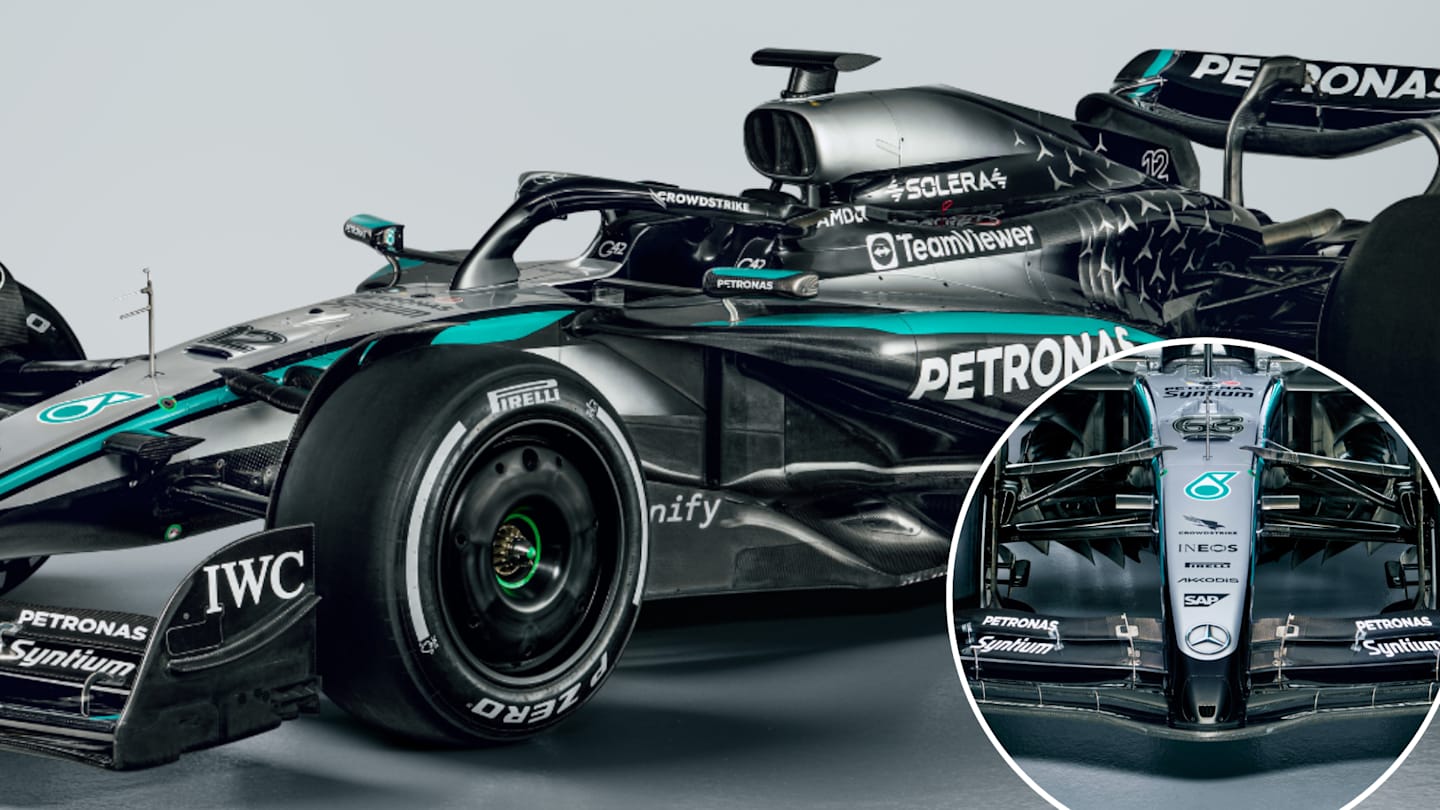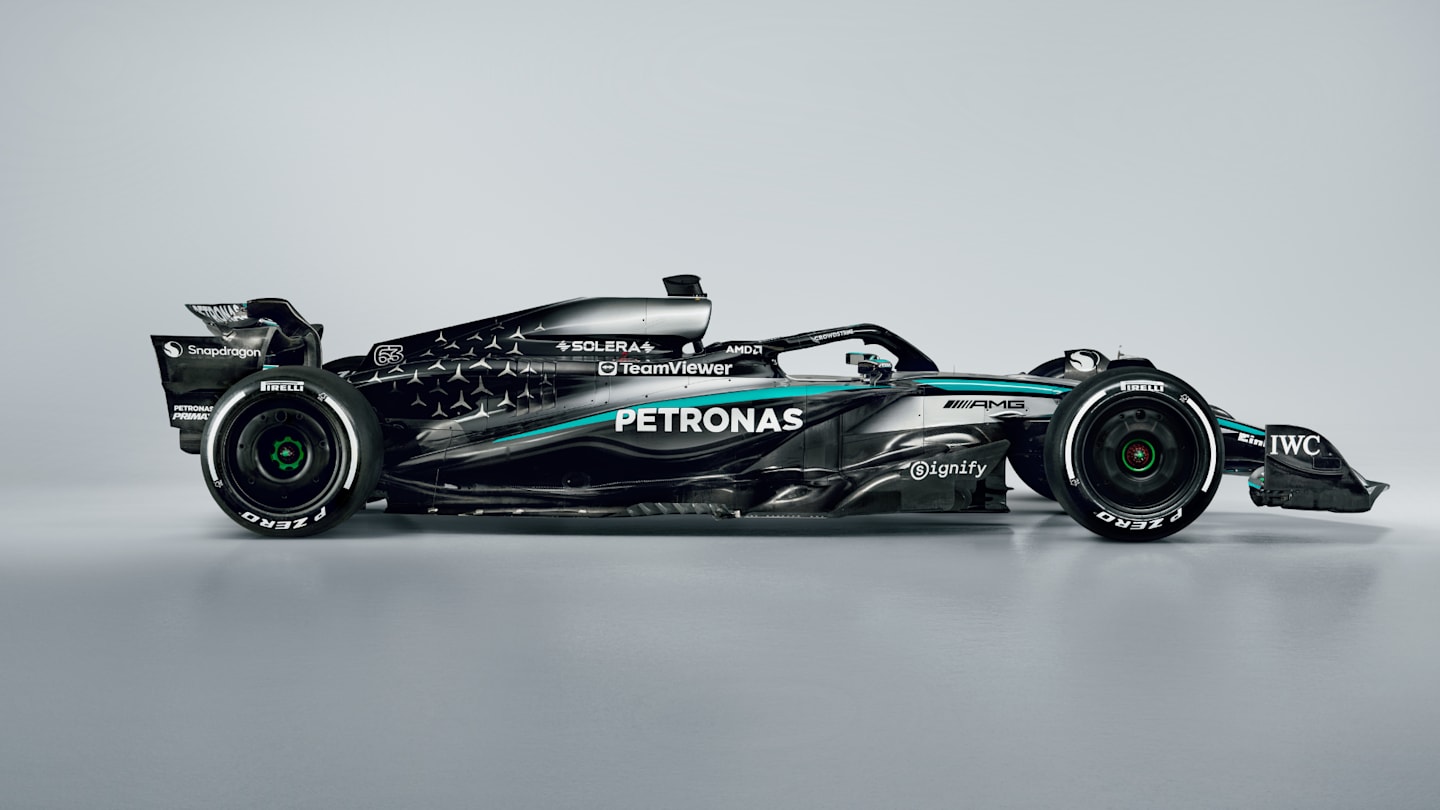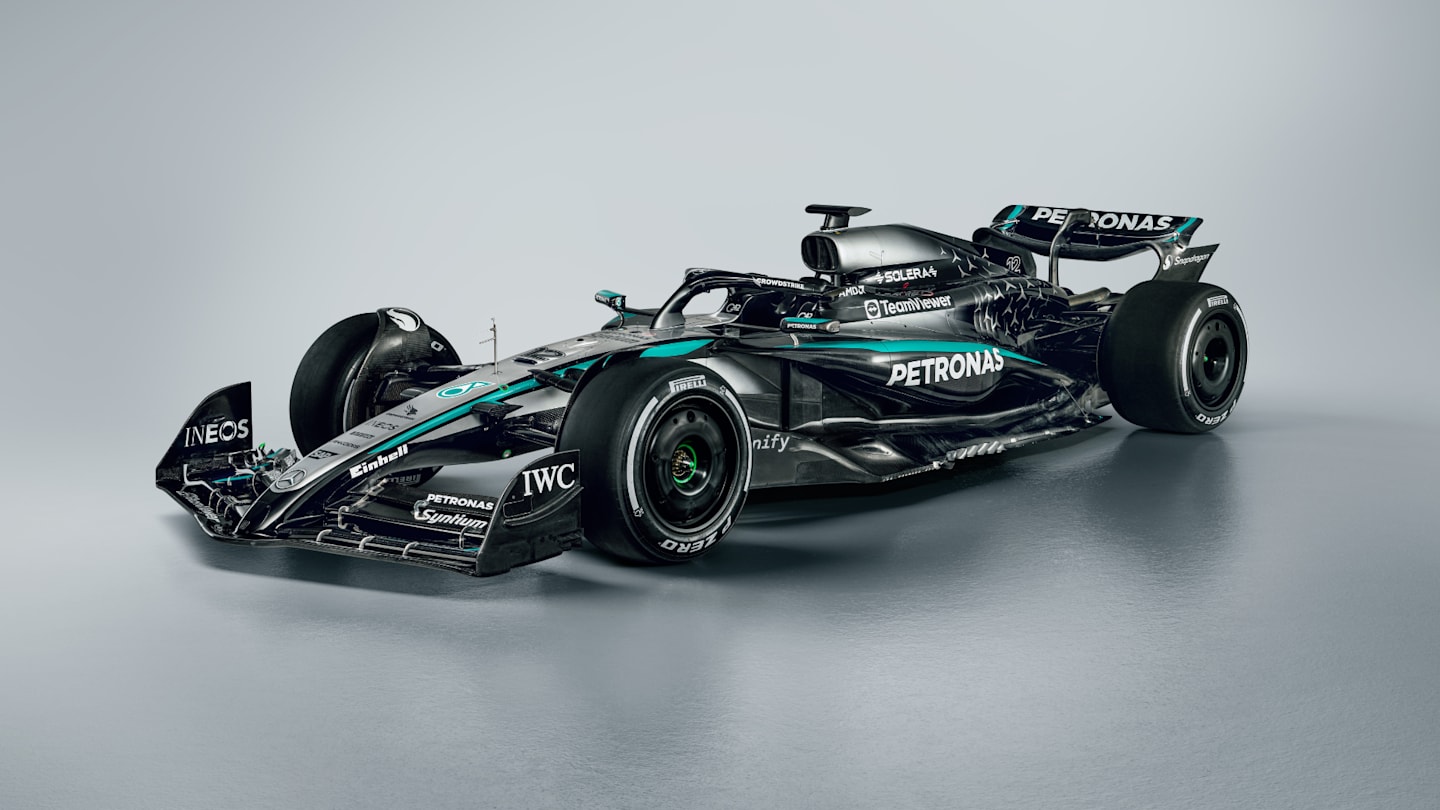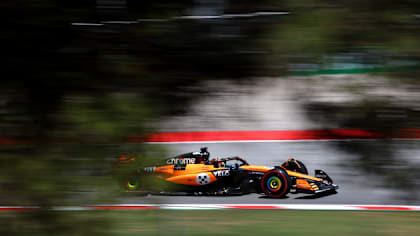
Technical
TECH ANALYSIS: The one key weakness Mercedes have targeted on Russell and Antonelli’s brand-new W16

Share

Mercedes’ new W16, while visibly closely related to last year’s car, features changes designed to address that car’s two main shortcomings – as outlined by Technical Director James Allison: “Being the fourth year of these regulations on the chassis side, the cars are in a more mature phase.
"Big gains in lap time are harder to come by, but we’ve been concentrating on making improvements in the areas that held us back last year. Our primary focus has been on dialling out the W15’s slight reluctance to turn in slow corners, along with the imbalance in tyre temperatures that made the car inconsistent from session to session.”
FIRST LOOK: Mercedes unveil new 2025 car as W16 breaks cover
Like Ferrari – and unlike McLaren – Merc’s new car is chasing a specific weakness of the ’24 model. Although the problems of the ’24 Merc and Ferrari were quite different, they both highlighted the key difficulty of creating a fast car within these regulations: that of achieving good downforce in combination with a driveable balance through both low-speed corners and high.
With Ferrari, the problem was a relative lack of high-speed downforce. The Mercedes by contrast could be super-quick through high-speed corners but struggled on the sort of low-speed sections of track where the Ferrari was dynamite.

Mercedes unveiled the W16 just days before pre-season testing for the 2025 campaign takes place
Mercedes are attempting to bring a more harmonious set of traits across the speed range, while staying with the W15’s general chassis geometry and suspension layout (still push-rod front and rear).
The gearbox is a carry-over unit from 2024, reflecting the fact that there are no changes in cockpit positioning or wheelbase (unlike in ’24 and unlike at Ferrari this year). The differences are all in the aerodynamic surfaces.
GALLERY: All the angles as Mercedes launch their W16 challenger
The front wing shown on the first renderings of the W16 has a subtly different flap geometry to that of its predecessor, with the flaps retaining a greater depth towards the outboard. Furthermore, the nose (which appears slightly narrower than before) now joins the bottom mainplane of the wing without any slot gap through to the floor.
As with all the cars, the nose’s underside is scalloped out to create a negative pressure area which speeds up the airflow to the benefit of downforce acting directly upon the front axle. Without the slot gap, that effect will be enhanced.
But the slot gap was there to feed the underfloor, so it would appear Mercedes have tried to change the emphasis towards the front at low speeds (where understeer is inevitably the limiting factor), even at the expense of some rear downforce.

The deletion of the slot gap where the nose joins the front wing should help bring more load onto the front axle at low speeds
But that front/rear aero balance will inevitably change at different speeds. As the squaring effect of downforce with speed compresses the car down on its suspension, the front wing can become too powerful and a more rearwards aero balance will be needed – i.e. the downforce acting upon the rear axle needs to increase more with speed than that acting upon the front.
This is where the previous slot gap arrangement would have helped out. With that no longer there, Mercedes appear to be trying to enhance the flow to the rear corners of the car (in between the rear tyre and diffuser) with an undercut section which runs the whole length of the sidepod (rather like on the 2011 Toro Rosso STR6), forming a channel with a wide funnel beneath the new radiator inlets.
TEAM PREVIEW: The post-Hamilton era has arrived – 2025 is the start of Mercedes' new chapter
A notable hump on the sidepod’s underside (probably to accommodate the bottom of the radiator) briefly narrows the height of the floor edge channel beneath and may have a venturi effect similar to that used on the underfloors of these cars, helping accelerate that air as it makes its way along the car.
The airflow down this floor edge and that of the underfloor meet up around the back of the diffuser and are intimately related. The higher the energy of the airflow along the floor edges, the greater its pull will be on the underfloor flow where the two flows meet.
The aim will be to have the downforce created by this method increase with speed at a greater rate than that generated by the front wing, thereby giving the car a wider sweet spot of balance through the speed range. This will become even more important from the Spanish Grand Prix onwards when the more stringent front wing flexibility interpretation comes into effect.

The undercut of the W16 runs the full length of the sidepod
The re-fashioning of the Merc’s radiator inlets plays a crucial part in creating that full length undercut. There is a Red Bull-like vertical inlet tight against the bodywork sides and a much more intricately-shaped horizontal inlet. It’s not clear from the images if the two are joined up.
The whole sidepod front is now much more rounded and pared away, which should enhance that flow down into the undercut and along the channels.
WATCH: Mercedes’ 2025 livery breaks cover during F1 75 Live in London
As a general trait, the aerodynamics of the ’24 Merc appeared to have been optimised around a super-low ride height, giving it great performance on smooth, fast tracks.
But as soon as the ride height needed to be raised (and the suspension softened) to accommodate bumpier surfaces, its performance fell away more than proportionately to other cars. It remains to be seen how effectively that might have been addressed with this car.
Of the three cars from the top four teams released so far, we have seen a McLaren seeking to retain its existing excellent balance but with more downforce, a Ferrari seeking to eradicate its high-speed deficit through a fundamental chassis change (with more rearwards cockpit) and now a Mercedes seeking to address its slow corner weakness with a new aero balance emphasis.

RACE TICKETS - SPAIN
Don't miss your chance to experience F1 racing in Barcelona...
DISCOVER MORE...
EXPLAINED: Everything you need to know about the Spanish Grand Prix front wing Technical Directive
5 must-see moments from the new 'F1: The Academy' Netflix show
F1 25 out now – with 'F1' movie integration and the return of ‘Braking Point’ story mode
GREATEST RACES #23: An F1 title decided by just half a point – 1984 Portuguese Grand Prix
YOU MIGHT ALSO LIKE
Report F3: Camara dominates to take fourth pole of 2025 in Barcelona
News ‘Our competitors look quick’ – Piastri predicts ‘tight battle’ during Qualifying in Barcelona
FeatureF1 Unlocked PRACTICE DEBRIEF: Can Red Bull or Mercedes take the fight to McLaren at the Spanish Grand Prix?
News ‘I hope it will be a bit more similar to Imola’ – Verstappen hopeful he can bounce back from Monaco disappointment in Spain




